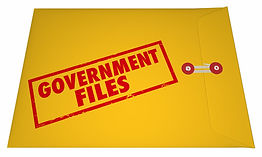MANAGEMENT UPDATE.
HOW YOUR CITY CAN IMPROVE ITS DATA USE
Cities with populations of at least 30,000 have the chance to become part of the What Works Cities program, which will help give them the tools to better use data-driven practices, while also providing international networking opportunities.
Twice a year, cities can apply for the program’s Certification process. This summer’s deadline for entering is July 15. Joining requires that cities fill out an online self-assessment that helps to benchmark their current data practices against the What Works Cities Certification standard.
Though submissions can occur at other points in the year, the evaluation that leads to Certification only occurs in July and December. This summer’s deadline for entering the organization’s certification process is July 15.
Whether or not a city is certified based on the What Works Cities standard, by filling out the self-assessment, it joins 250 others and will receive “clear, actionable next steps” from the What Works Cities team that are tailored to their individual situation. Entering this process also gains cities access to expert support, training and resources and an online forum that allows them to talk with each other about their data practices, problems and solutions.
According to Results for America, which leads the What Works Cities program, this permits them to “move beyond isolated successes to achieve citywide scale, sustainability and resident impact through data-driven governance.”

The self-assessment is free and takes one to two hours. Submissions are welcome from cities at any point in their “data journey,” according to Results for America. Getting certified by What Works Cities requires evidence of leadership endorsement and a commitment to leading with data. To read our article about the nine cities that recently earned this designation, click here.
The data certification program was started by Bloomberg Philanthropies for United States cities in 2017. Since 2022, the program has also been open to cities throughout North, Central and South America.
If the assessment leads to certification, the cities are divided into three groups depending on the percentage of the criteria they meet. Silver-level cities, for example achieve 51-67% of the 43 criteria, while those who achieve 68-84% of them are labeled as Gold and cities which do better than that are considered Platinum.
While entry into the program is currently limited to cities with populations of 30,000 or over, any city can take the self-assessment to benchmark their practices and “to learn more about the standard and the people and processes needed to create a well-managed, data-driven city.”
#StateandLocalGovernmentManagement #StateandLocalGovernmentPerformance #StateandLocalGovernmentData #CityGovernmentData #CityDataManagement #CityDataGovernance #WhatWorksCities #ResultsForAmerica #CityDataCertification #CityDataStandard #CityDataUse #CityDataAnalysis #CityPerformanceMeasurement #StateandLocalPerformanceMeasurement #BarrettandGreeneInc #B&GWeeklySelection








